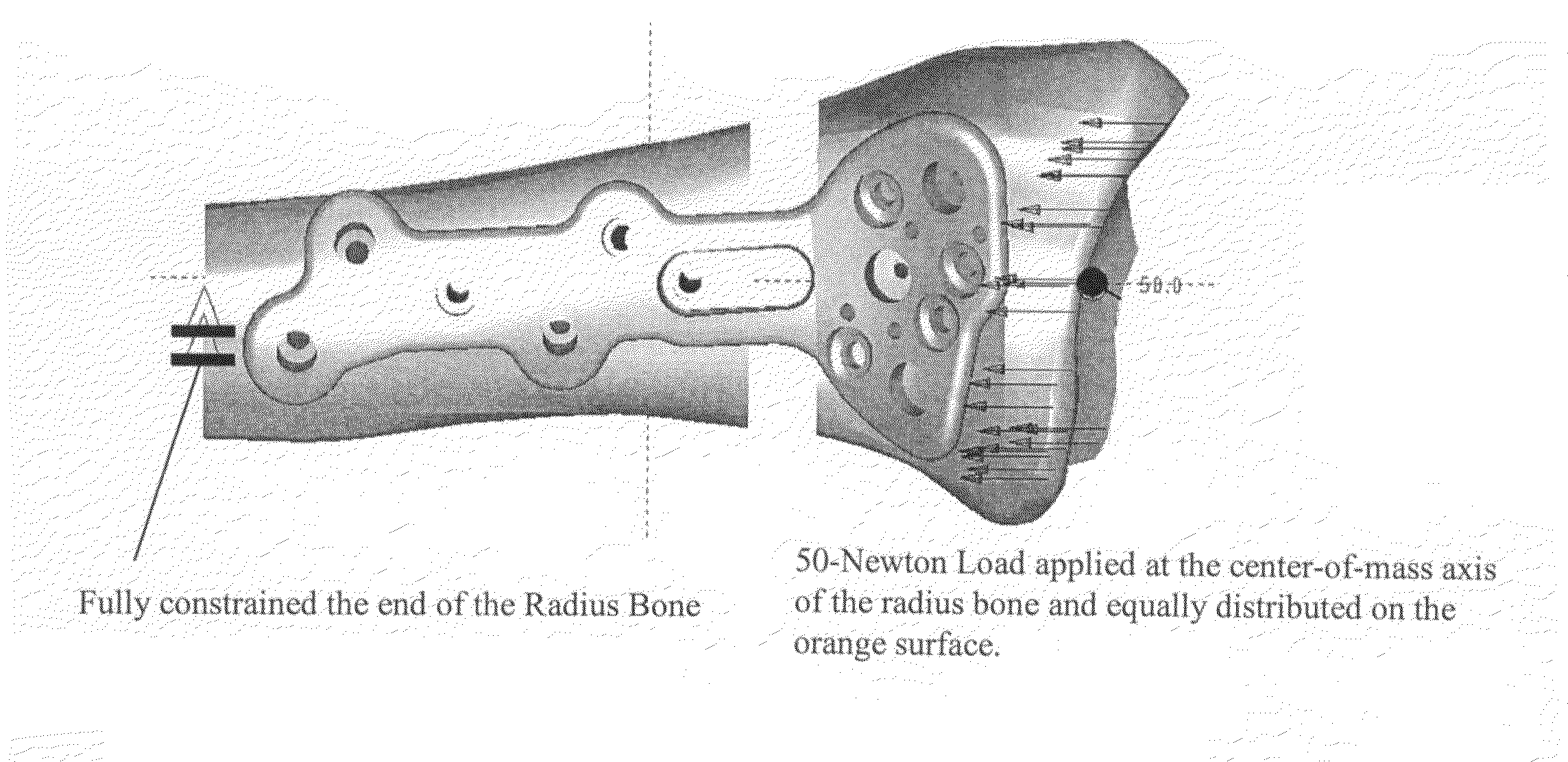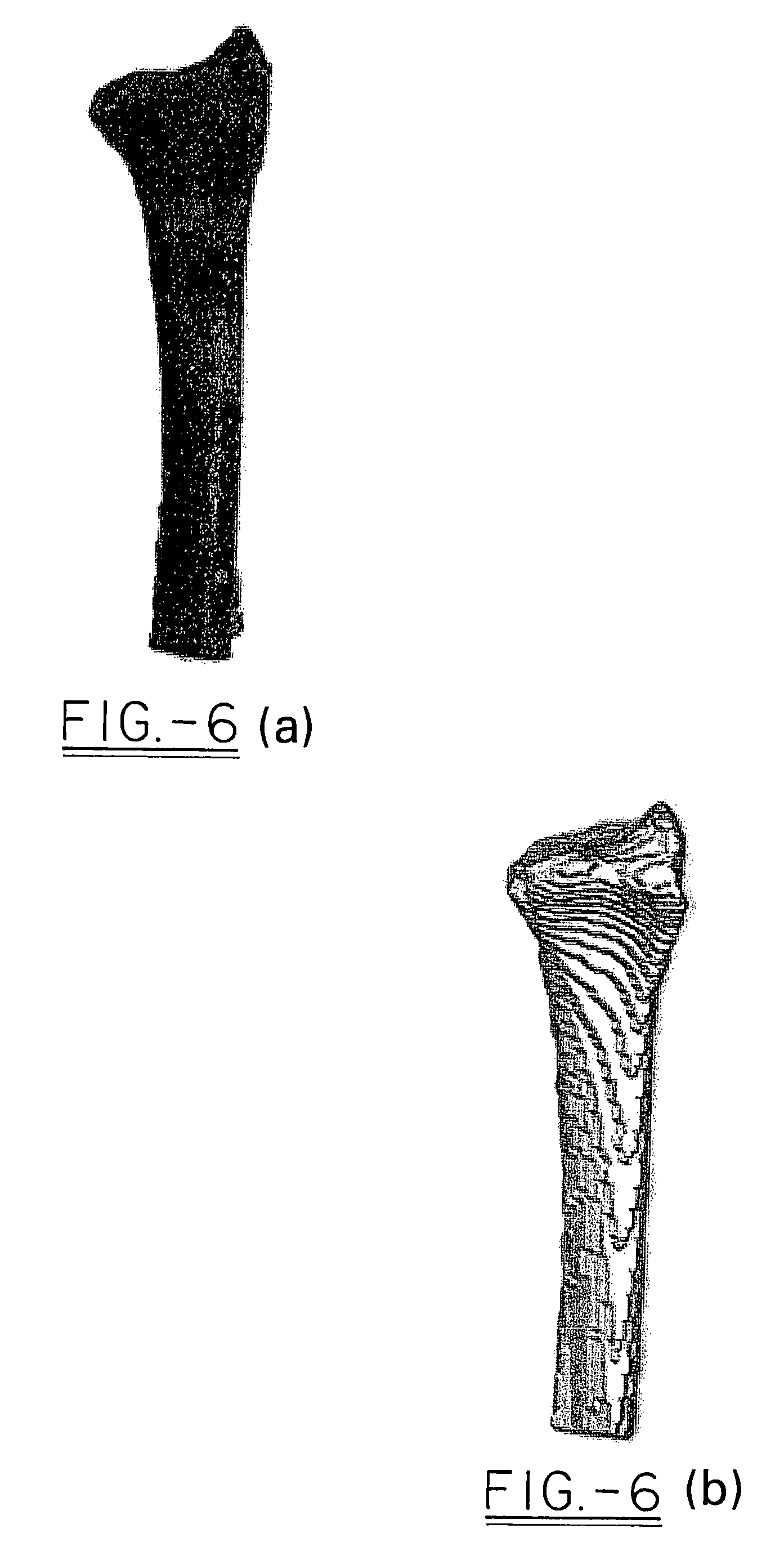Method of making orthopedic implants and the orthopedic implants
a technology of orthopedic implants and implants, applied in the field of making orthopedic implants and orthopedic implants, can solve the problems of less success, less success, and difficulty in reconstruction
- Summary
- Abstract
- Description
- Claims
- Application Information
AI Technical Summary
Benefits of technology
Problems solved by technology
Method used
Image
Examples
Embodiment Construction
[0022]In order to begin the design process of the present invention, digital information is collected for a particular anatomical site. The information can be generated from known imaging techniques including CT scans, MRI or radiographic techniques. The sample may include cadavers or live specimens. The sample group may be defined to include particular characteristics, for example, a geriatric or pediatric population, or a generalized sample of the relevant population for a location. In particular, a representative sample of from about 4 to about 50, and more preferably from about 6 to about 30 and most preferably from about 10 to about 20 samples are collected. In this instance, a sample of sixteen right distal radius specimens were harvested from preserved cadavers at Washington University School of Medicine. Six male cadavers and 10 female cadavers were used, ranging in age at time of death from 61 to 98 (Table 1). All soft tissue was stripped from the bone samples beginning at ...
PUM
 Login to View More
Login to View More Abstract
Description
Claims
Application Information
 Login to View More
Login to View More - R&D
- Intellectual Property
- Life Sciences
- Materials
- Tech Scout
- Unparalleled Data Quality
- Higher Quality Content
- 60% Fewer Hallucinations
Browse by: Latest US Patents, China's latest patents, Technical Efficacy Thesaurus, Application Domain, Technology Topic, Popular Technical Reports.
© 2025 PatSnap. All rights reserved.Legal|Privacy policy|Modern Slavery Act Transparency Statement|Sitemap|About US| Contact US: help@patsnap.com



